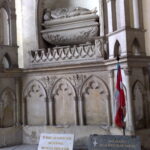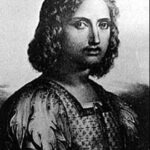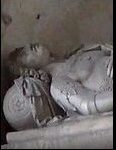
Humbert De Savoie
Date of Birth
c. 950 or c. 980
Place of Birth
Chambéry, Savoie, Rhone-Alpes, France
Towns / Cities Moved Into
Chambéry, Savoie, Rhone-Alpes, France |
Hermillon, Rhône-Alpes, France
Known Occupation
Comte de Savoie
Comte de Maurienne
Comte de Chablais
Religion
-
Spouse
Death Information
Year of death
1 Jul 1048
Place of death
Hermillon, Departement de la Savoie, Rhône-Alpes, France
Cause of death
-
Burial location
He was buried in Saint-Jean-de-Maurienne Cathedral in Saint-Jean-de-Maurienne,
Departement de la Savoie, Rhône-Alpes, France
Parents

Beroldus Berthold Di Maurienne

Bertila Dimaurienne
Marital Status


Married Auxila Von Lenzburg
997
Siblings

Children




Narrative / Story
In the verdant valleys of Chambéry, Savoie, in the late 10th century, a figure of noble descent and significant influence was born – Humbert, known as the Whitehanded. His birth, around 950 or 980, marked the beginning of a life that would shape the contours of medieval European nobility. Humbert’s lineage, shrouded in the mists of history, is believed to have roots in Burgundy, aligning with the era’s complex tapestry of noble families.
Before his famed marital alliance, Humbert’s early years were spent consolidating his position in the region. He held lands around Belley and Sermorens, navigating the intricate feudal landscape that defined the era. His life took a pivotal turn around 997 when he united with Auxilia des Equestres, also known as Auxila Von Lenzburg, in marriage. This union was likely a strategic alliance, common in medieval European nobility, to strengthen political and familial ties.
The couple was blessed with several children, including Amédée de Maurienne (Amadeus I), Aymon de Maurienne, Bishop of Sion, Burcard d’Aoste, Archbishop of Lyon, and Comte Oddon de Maurienne. Each child’s path reflected the diverse roles and responsibilities borne by members of a noble family.
Humbert’s life was characterized by his illustrious titles – Comte de Savoie, Comte de Maurienne, and Comte de Chablais. These titles were not mere honorifics but embodied the weighty responsibilities of managing lands, administering justice, and upholding the military defense of his territories. His service to Emperor Konrad II was a testament to his loyalty and strategic acumen, earning him significant land grants and expanding his influence across the region.
Living in an era marked by the reign of Rudolf III of Burgundy and the subsequent rise of Emperor Konrad II, Humbert’s life was intertwined with significant political shifts. The era was a chessboard of power plays, with noble families vying for influence and control. Humbert navigated these turbulent waters with skill and foresight, avoiding any notable instances of discrimination or racial strife, as societal structures were predominantly defined by feudal hierarchy and allegiance.
Humbert’s journey came to a close on July 1, 1048, in Hermillon, Rhône-Alpes, France. His final resting place in Saint-Jean-de-Maurienne Cathedral is a silent testament to his enduring legacy. As the founder of the House of Savoy, Humbert’s influence extended far beyond his lifetime, laying the groundwork for a dynasty that would leave an indelible mark on European history.
In conclusion, Humbert De Savoie’s life was a tapestry woven with threads of strategic alliances, territorial expansions, and unwavering service to the empire. His story, set against the backdrop of feudal Europe’s shifting power dynamics, offers a fascinating glimpse into the lives of medieval nobility. His legacy as the progenitor of the House of Savoy underscores his pivotal role in shaping the political and social landscape of his time.



